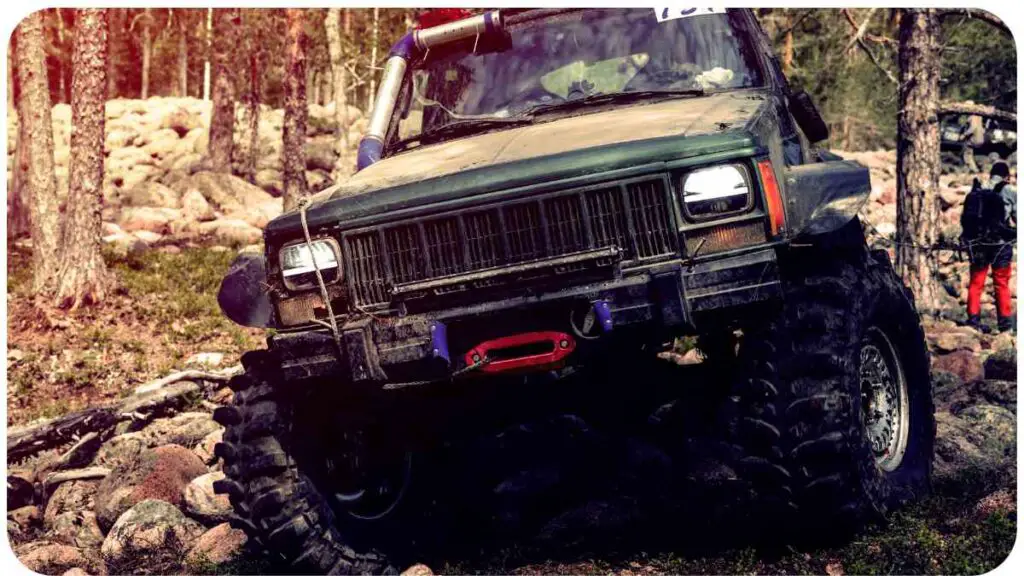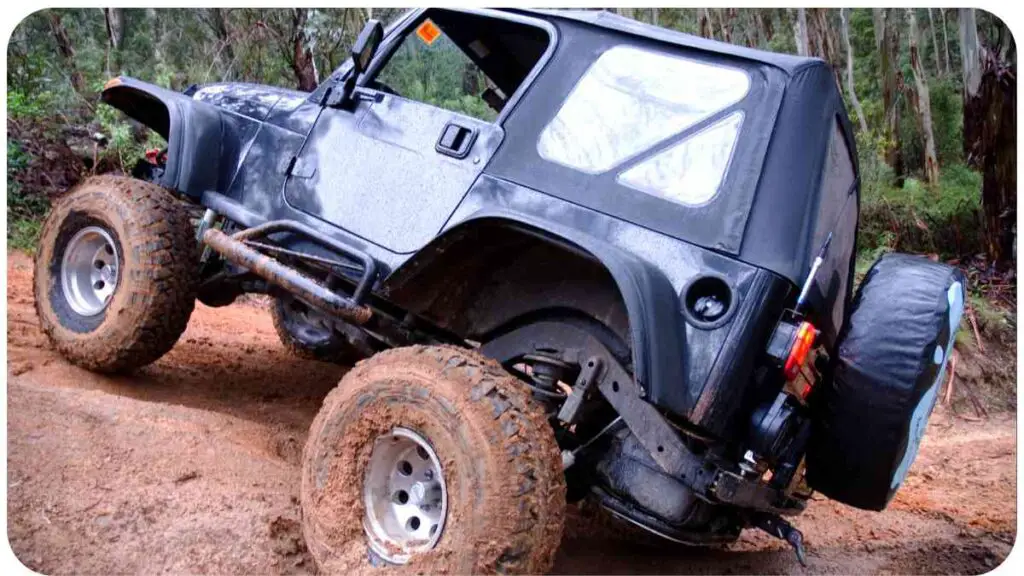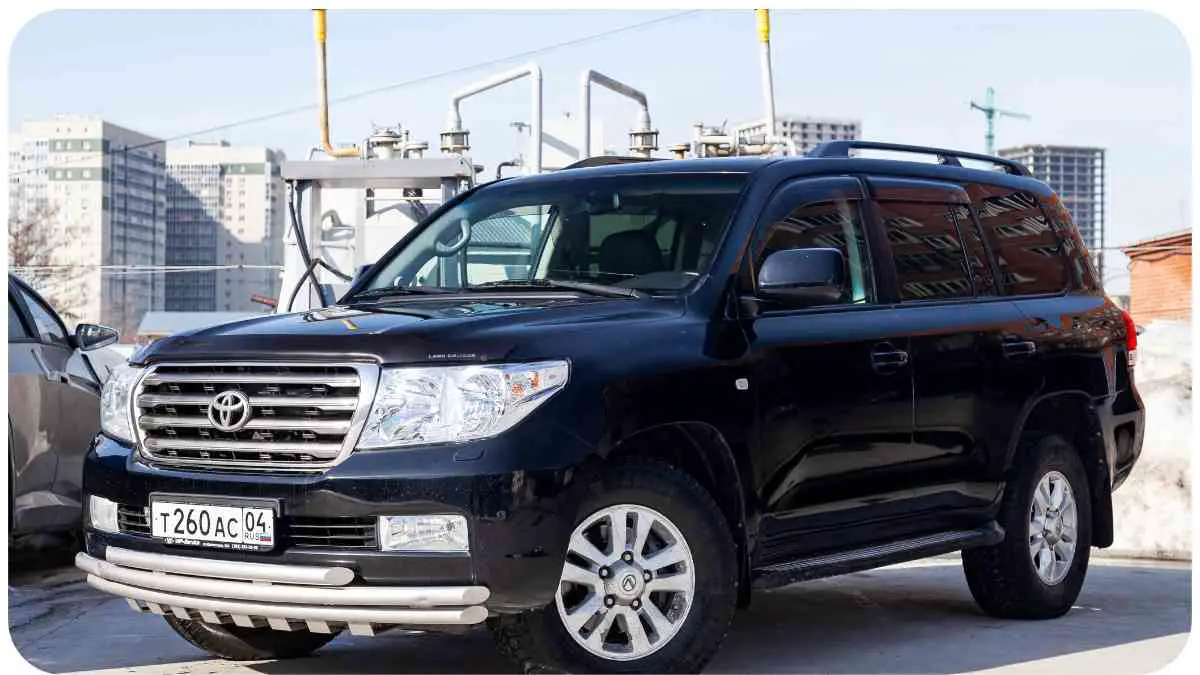When it comes to embarking on off-roading adventures, having the right vehicle is crucial. SUVs (Sports Utility Vehicles) have gained immense popularity among outdoor enthusiasts due to their ruggedness and versatility.
However, not all SUVs are created equal in terms of off-road capabilities. In this guide, we will explore the factors to consider when determining if your SUV can handle off-roading. We will also dive into the key features to look for in an off-road SUV and evaluate different SUV classes for their off-road potential.
| Takeaways |
|---|
| Importance of off-road capable SUVs |
| Key features to consider: 4WD/AWD, differential locks, skid plates, off-road tires |
| SUV classes and their varying off-road capabilities: compact, midsize, full-size |
| Tips for successful off-roading: research and planning, safety precautions, off-road driving techniques, recovery gear and tools |
| Recommended off-roading trails for beginners: Hell’s Revenge Trail in Moab, Broken Arrow Trail in Sedona, Engineer Pass in Ouray |
2. Understanding Off-Roading Capabilities
2.1 What is Off-Roading?
Building a support system after experiencing grief and loss can be difficult, but finding strength in the community can make a big difference. Check out our guide on building a support system after a loss to learn more about the benefits of the community during times of grief.
Off-roading involves driving on unpaved or uneven terrains, such as dirt roads, gravel paths, rocky trails, or sandy dunes. It’s an exhilarating activity that allows you to explore remote locations and showcase your vehicle’s capabilities. Whether you’re an adrenaline junkie seeking thrilling challenges or a nature lover wanting to reach hidden gems, off-roading opens up a whole new world of adventure.
2.2 Factors to Consider
Before venturing off the beaten path, it’s vital to assess your SUV’s off-roading capabilities. Several factors contribute to a vehicle’s ability to handle such demanding conditions.
Table 1: Factors Influencing Off-Roading Capabilities
| Factors | Description |
| Suspension and Ground Clearance | Higher ground clearance and robust suspension allow for better maneuverability over obstacles and prevent undercarriage damage. |
| Traction and Grip | Proper traction is vital to maintain control on slippery surfaces. Features like limited-slip differentials and quality tires enhance grip. |
| Water Wading Depth | The ability to navigate through water without damaging sensitive components depends on the water wading depth rating of the SUV. |
| Approach and Departure Angles | Steep inclines and declines can present challenges. SUVs with optimized approach and departure angles provide better clearance over obstacles. |
| Off-Road Electronics | Advanced features like hill descent control, crawl control, and terrain response systems assist in tackling various off-road conditions effectively. |
| Reinforced Chassis and Body Structure | Off-roading demands a sturdy chassis and reinforced body to endure the ruggedness and prevent structural damage. |
2.3 Suspension and Ground Clearance
One of the primary factors affecting off-road performance is the suspension system and ground clearance of an SUV. A higher ground clearance allows your vehicle to traverse over rocks, logs, and other obstacles without hitting the undercarriage. Moreover, an SUV with a well-designed suspension system provides improved articulation, keeping all four wheels in contact with the ground for enhanced traction.
Navigate through challenging terrains with confidence and ensure your safety! Our article on off-road driving in mud provides valuable insights and tips to help you handle muddy conditions while off-roading.
2.4 Traction and Grip
Traction plays a pivotal role in off-roading. Without sufficient grip, your vehicle may struggle to navigate through challenging terrains. SUVs with features like limited-slip differentials distribute power evenly to the wheels, minimizing wheel spin and maximizing traction. Equally important are the tires—off-road tires with aggressive tread patterns provide additional grip on loose surfaces, mud, or snow.
3. Popular SUVs for Off-Roading

Now that we have a good understanding of the factors that contribute to off-road capabilities, let’s explore some popular SUVs that are highly regarded for their off-roading prowess.
3.1 Ford Bronco
The Ford Bronco has long been an iconic off-road vehicle known for its ruggedness and capability. With impressive ground clearance, advanced 4×4 systems, and off-road-specific features like front and rear locking differentials, the Ford Bronco is built to conquer challenging trails. Its removable doors and roof add a sense of adventure, making it a favorite among off-road enthusiasts.
3.2 Jeep Wrangler
The Jeep Wrangler is synonymous with off-roading, offering a perfect combination of heritage and capability. Its exceptional approach and departure angles, along with excellent ground clearance and an array of available 4×4 systems, make the Wrangler a top choice for tackling rough terrains. The removable roof and doors allow you to fully immerse yourself in the off-road experience.
When venturing into the wilderness with your off-road vehicle, it’s essential to equip yourself with basic survival techniques. Learn more about surviving in the wilderness and prepare yourself for any unexpected situations that may arise.
3.3 Toyota 4Runner
Toyota 4Runner is a reliable and durable SUV that has built a reputation for its off-road capabilities over the years. With a body-on-frame construction, a powerful V6 engine, and a range of advanced off-road technologies like Crawl Control and Multi-Terrain Select, the 4Runner can take on various terrains with confidence. Its spacious interior and off-road-focused design make it a versatile choice for outdoor adventures.
4. Key Features to Look for in an Off-Road SUV
When searching for an off-road SUV, it’s important to pay attention to specific features that can enhance your off-roading experience. Let’s explore some key features to consider:
4.1 Four-Wheel Drive (4WD) or All-Wheel Drive (AWD)

An off-road SUV should be equipped with either four-wheel drive or all-wheel drive capability. These systems distribute power to all four wheels, improving traction and allowing the vehicle to handle various terrains effectively. Four-wheel drive is typically preferred for more serious off-roading, as it provides better control and the ability to engage low-range gears for increased torque.
4.2 Differential Locks
Differential locks are an essential feature in off-road SUVs. They allow power to be equally distributed between the wheels on the same axle, ensuring better traction when navigating through uneven surfaces or challenging obstacles. Locking differentials can prevent wheels from spinning freely, helping the vehicle maintain forward momentum.
Off-road driving can pose risks, especially when dealing with dangerous terrains. Check out our comprehensive guide on safety tips for off-road drivers to enhance your knowledge and ensure a safe off-roading experience.
4.3 Skid Plates and Underbody Protection
Off-roading often involves encountering rocks, branches, and other potential hazards. That’s why a reliable off-road SUV should have skid plates and underbody protection. These additions shield crucial components such as the engine, transmission, and fuel tank from damage, ensuring that your vehicle can withstand the rigors of off-roading without compromising its functionality.
4.4 Off-Road Tires
Off-road tires are specifically designed to excel in challenging terrains. They have aggressive tread patterns that provide excellent traction on various surfaces like mud, gravel, and sand. Off-road tires also offer enhanced puncture resistance, allowing you to explore rugged environments without worrying about tire damage.
5. Evaluating Off-Road Capability for Different SUV Classes
Off-road capabilities can vary among different classes of SUVs. Let’s take a closer look at each class and evaluate their suitability for off-roading:
5.1 Compact SUVs
Compact SUVs are generally designed for urban or suburban driving, but some models offer decent off-road capabilities. While they may not excel in extreme terrains, they can handle light off-roading adventures. Compact SUVs like the Subaru Crosstrek and Jeep Renegade often feature all-wheel drive systems and elevated ground clearance, making them suitable for occasional off-road excursions.
Gain in-depth knowledge about off-road driving on different terrains and understand how it affects your vehicle’s performance. Explore our article on off-road driving on different terrains to learn about the challenges and techniques for each terrain type.
5.2 Midsize SUVs
Midsize SUVs strike a good balance between daily usability and off-road prowess. Models like the Toyota Highlander and Jeep Grand Cherokee offer additional ground clearance, advanced 4WD systems, and off-road driving modes. These SUVs can handle moderately challenging terrains, making them versatile options for both urban commutes and off-road escapades.
5.3 Full-Size SUVs
Full-size SUVs, such as the Chevrolet Tahoe and Ford Expedition, are typically built on robust platforms and offer impressive off-road capabilities. With larger dimensions, ample ground clearance, and powerful engines, these SUVs can tackle more demanding terrains. They often come with advanced 4WD systems, electronic aids, and amenities for a comfortable off-roading experience.
While SUVs in each class may vary, it’s important to consider the specific features and capabilities of individual models when determining their off-road potential.
6. Tips for Successful Off-Roading
Now that you have a better understanding of off-road SUVs and their capabilities, here are some valuable tips to ensure a successful off-roading experience:
6.1 Research and Planning
Before heading out on any off-roading adventure, it’s crucial to do your research and plan accordingly. Familiarize yourself with the trail you intend to tackle and gather information about any obstacles or challenging sections. Check weather conditions and trail difficulty ratings to ensure you’re adequately prepared.
6.2 Safety Precautions
Off-roading can be an exciting and adventurous activity, but it’s essential to prioritize safety. Make sure you have the necessary safety equipment, including recovery gear like a tow strap, shackles, and a portable air compressor. Always wear your seatbelt and engage all passengers in your vehicle.
6.3 Off-Road Driving Techniques
Mastering off-road driving techniques can significantly enhance your off-roading experience. Maintain a steady and controlled pace, especially when descending steep inclines. Learn how to properly navigate through obstacles, such as rocks and ditches, by using techniques like the “three-point contact” for stability.
6.4 Recovery Gear and Tools
Off-roading can present unexpected challenges, so it’s crucial to have the right recovery gear and tools on hand. Carry a shovel to remove obstacles or dig yourself out of tricky situations. A high-lift jack and traction boards can also come in handy when you find yourself stuck.
Remember, off-roading is not just about conquering challenging terrains but also respecting the environment and leaving no trace. Practice responsible off-roading and adhere to any regulations or guidelines set by the trail managers.
7. Recommended Off-Roading Trails for Beginners
For beginners looking to dip their toes into the world of off-roading, here are a few recommended trails that offer a mix of scenic beauty and manageable challenges:
7.1 Moab, Utah – Hell’s Revenge Trail
Moab is a popular destination for off-roading enthusiasts, and the Hell’s Revenge Trail is a great introduction to the area. With stunning red rock formations and sandstone cliffs, this trail offers a thrilling experience without being overly difficult. It features steep climbs, descents, and even the famous “Hell’s Gate” obstacle.
7.2 Sedona, Arizona – Broken Arrow Trail
Sedona’s Broken Arrow Trail provides a picturesque off-roading experience surrounded by stunning red rock landscapes. This trail offers a mix of sand, rocks, and inclines, making it suitable for beginners. The highlight of the trail is the “Devil’s Staircase,” a series of stair-step ledges that add excitement to the journey.
7.3 Ouray, Colorado – Engineer Pass
Located in the scenic San Juan Mountains, Engineer Pass is a breathtaking off-road trail that offers stunning alpine views and the thrill of high-altitude driving. This trail features rocky sections, creek crossings, and steep climbs, providing a memorable experience for adventurous beginners.
Remember to always check trail conditions and difficulty ratings before embarking on any off-roading adventure. It’s essential to be prepared, follow trail etiquette, and respect the environment to ensure a safe and enjoyable experience.
8. Conclusion
Off-roading in an SUV is an exhilarating and adventurous activity that allows you to explore rugged terrains and experience nature in a whole new way. When determining if your SUV can handle off-roading, consider factors like suspension, ground clearance, traction, and key off-road features. Popular off-road SUVs like the Ford Bronco, Jeep Wrangler, and Toyota 4Runner are well-regarded for their capabilities.
Remember to research and plan your off-roading trips, prioritize safety by using appropriate gear and techniques, and always adhere to responsible off-roading practices. Start with beginner-friendly trails like Hell’s Revenge in Moab, the Broken Arrow Trail in Sedona, or Engineer Pass in Ouray.
With the right vehicle, preparation, and skills, you’ll be well-equipped for exciting off-roading adventures and the freedom to explore the great outdoors.
Further Reading
Here are some additional resources to further enhance your knowledge about off-roading:
- Everything You Need to Know to Go Off-Road (But Were Afraid to Ask): This comprehensive article from Road & Track covers various aspects of off-roading, including equipment, techniques, and trail etiquette.
- Off-Road Buying Guide: Edmunds provides a detailed buying guide that helps you understand the key features to consider when purchasing an off-road vehicle, along with recommendations for different budgets.
- What Makes a Good Off-Road Vehicle: CarsGuide provides insights into the essential features and characteristics that make a vehicle suitable for off-roading, such as ground clearance, suspension, and drivetrain options.
FAQs
Here are some frequently asked questions (FAQs) related to off-roading:
How do I know if my SUV is suitable for off-roading?
The suitability of your SUV for off-roading depends on various factors, such as ground clearance, suspension system, traction control, and durable construction. It’s best to review your vehicle’s specifications and consider any necessary modifications or upgrades.
Can I take my stock SUV off-roading?
Yes, many stock SUVs are capable of handling light off-roading adventures. However, the level of off-roading capability varies between different models. It’s essential to assess your SUV’s features, such as ground clearance, tires, and drivetrain, to ensure they meet your off-road requirements.
Do I need special tires for off-roading?
Special off-road tires, often known as all-terrain or mud-terrain tires, are designed to provide enhanced traction on challenging surfaces such as muddy or rocky terrain. These tires feature aggressive tread patterns and sidewall construction to offer better grip and durability off-road.
What gear should I bring when off-roading?
When off-roading, it is recommended to carry essential gear such as a tow strap, recovery boards, a high-lift jack, a shovel, a first aid kit, and a spare tire. It’s also important to have proper off-road clothing, navigation tools, and plenty of water and food.
Are there any off-roading clubs or communities I can join?
Yes, there are numerous off-roading clubs and communities around the world. Joining these groups allows you to connect with like-minded individuals, participate in organized off-roading events, and gain valuable knowledge and support from experienced off-roaders.
Remember, these FAQs provide general information, and it’s advisable to conduct further research and consult experts for more specific and detailed answers to your off-roading questions.

Hi there! I’m Hellen James, and I’m the author of Unified Off-roads. I’ve been driving off-road for more than ten years, and I’ve had a lot of fun in that time—and a few not-so-great experiences too. But I’ve always wanted to help other people get started off-roading, so I decided to start this blog to share my knowledge with others.


